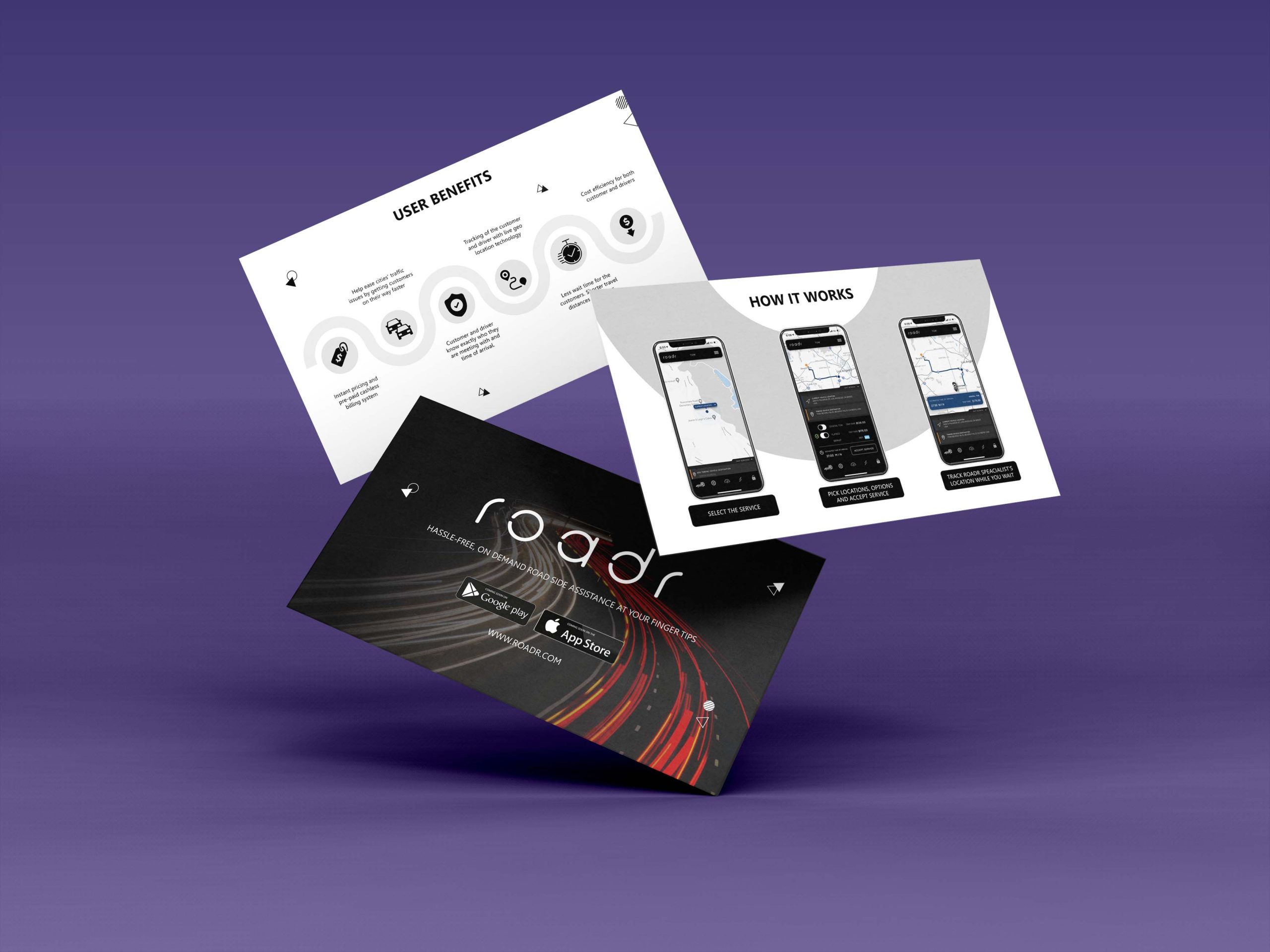In today’s competitive world, the quality of your pitch can make or break your chances of success. Many startups find it tough to create pitch decks that really shine, which can lead to poor investor engagement and missed opportunities for funding.
What is a Creative Pitch Deck?
A creative pitch deck is a visually engaging presentation designed to captivate potential investors and effectively communicate your startup’s vision. Unlike standard presentations, it combines aesthetics with strategic messaging to leave a memorable impression.

Definition and Purpose of a Pitch Deck
A pitch deck is a brief, visual presentation used by startups to pitch their business idea to potential investors. Its primary purpose is to outline the core elements of the business, including the problem being solved, the solution offered, the market opportunity, and the business model. A well-crafted pitch deck serves as a tool to generate interest, provide a clear overview of the business, and prompt further discussion or investment.
The Role of a Creative Pitch Deck in Startup Success
A creative pitch deck plays a crucial role in startup success by making your presentation stand out in a sea of generic slides. By leveraging innovative design elements and a compelling narrative, a creative pitch deck engages investors on both an emotional and intellectual level. It helps convey your vision and value proposition in a way that resonates, making it easier for investors to understand and connect with your business idea. This heightened engagement increases the likelihood of securing investment and support.
Key Elements of a Successful Creative Pitch Deck
To create an effective pitch deck, focus on two critical elements: visual design and content quality.
Visual Design and Storytelling
The visual design of a pitch deck should be more than just aesthetically pleasing; it must support the storytelling process. Effective use of colors, images, and layouts helps illustrate your points clearly and keeps the audience engaged. Strong storytelling integrates these visuals to craft a cohesive narrative that guides investors through your business idea. This approach not only captures attention but also helps to retain it, making your pitch memorable.
Content Quality and Messaging
Equally important is the clarity and impact of your content. A successful pitch deck must present information in a clear, concise manner, avoiding jargon and focusing on key messages. High-quality content addresses the investor’s concerns and highlights the unique aspects of your business. Clear and impactful messaging ensures that your pitch deck communicates the essential points effectively, facilitating a better understanding of your startup’s value and potential.
What Constitutes a Low-Quality Presentation?
A low-quality presentation fails to capture attention and effectively convey important information. Often characterized by poor design and unclear messaging, these presentations can undermine your pitch and diminish your chances of securing investment. Understanding the traits that contribute to a low-quality presentation can help you avoid common pitfalls and enhance your overall effectiveness.

Common Characteristics of Low-Quality Presentations
Low-quality presentations often suffer from several key issues that detract from their impact.
Lack of Cohesion and Design Flaws
One of the primary drawbacks of a low-quality presentation is its lack of cohesion. Poor design choices, such as inconsistent fonts, clashing colors, and cluttered slides, can make it difficult for the audience to follow along. Design flaws not only detract from the overall professionalism of the presentation but also make it harder for viewers to engage with and retain the information being presented. A presentation that lacks visual harmony and organization can appear unpolished and unprofessional, diminishing its effectiveness.
Ineffective Communication and Information Overload
Another significant issue with low-quality presentations is ineffective communication. Presentations that are overloaded with information can overwhelm the audience, making it challenging to discern the key messages. This information overload often results in slides packed with dense text, excessive data, or complex diagrams that fail to clarify the main points. As a result, the audience may struggle to grasp the essential aspects of the pitch, leading to disengagement and confusion.
How Low-Quality Presentations Fail to Engage
Low-quality presentations often fail to engage their audience, particularly investors who are critical in evaluating pitches.
Investor Perception and Decision-Making
From an investor’s perspective, a poorly executed presentation can reflect negatively on the credibility and potential of the startup. When a presentation lacks clarity and professionalism, it can create doubts about the team’s competence and the viability of the business idea. Investors may perceive a lack of effort or attention to detail as a sign that the startup is not serious or well-prepared. This negative perception can lead to missed opportunities, as investors might choose to pass on a pitch that fails to make a strong, positive impression.
Creative Pitch Decks vs. Low-Quality Presentations: A Comparative Analysis
When it comes to pitching your startup, the quality of your presentation can significantly impact its success. Understanding the differences between creative pitch decks and low-quality presentations can help you create a more effective pitch that resonates with investors. This comparative analysis highlights how these two approaches affect investor perception, message communication, and funding outcomes.

Impact on Investor Perception
First Impressions Matter
The initial reaction investors have to your pitch deck can set the tone for the entire presentation. Creative pitch decks, with their polished design and compelling narratives, tend to make a strong, positive first impression. They demonstrate professionalism, creativity, and a clear understanding of the audience’s needs, which can help build credibility and trust. In contrast, low-quality presentations often fail to capture attention due to their unprofessional appearance and disorganized content. These presentations can create a negative first impression, leading investors to question the startup’s attention to detail and overall potential.
Effectiveness in Communicating Your Message
Clarity and Engagement
The effectiveness of a pitch deck in communicating its message is crucial for engaging investors and conveying your business’s value proposition. Creative pitch decks are designed to clearly and effectively present key information through a combination of engaging visuals and concise messaging. They focus on clarity, ensuring that each slide builds upon the previous one to create a cohesive story. This approach helps maintain investor interest and ensures that critical points are communicated effectively. On the other hand, low-quality presentations often suffer from information overload and unclear messaging, making it difficult for investors to follow the narrative. The lack of clarity and engagement can lead to misunderstandings and reduced interest in the pitch.
Influence on Funding Outcomes
Real-World Examples and Case Studies
The impact of presentation quality on funding outcomes can be profound. Creative pitch decks have been linked to successful funding rounds in numerous case studies. For example, companies like Airbnb and Dropbox have credited their visually compelling pitch decks with helping them secure initial investments and attract attention from top venture capitalists. These decks effectively showcased their value propositions and market potential, leading to positive funding outcomes. Conversely, startups with low-quality presentations often face challenges in securing investment, as seen in case studies where poorly designed pitches failed to engage investors or convey the business’s potential effectively. These examples highlight the importance of investing time and effort into creating a high-quality pitch deck that stands out and makes a lasting impression.
What is the Difference Between a Pitch Deck and a PowerPoint Presentation?
While both pitch decks and PowerPoint presentations serve as tools for presenting information, they cater to different purposes and are designed with distinct objectives in mind. Understanding these differences can help you choose the right approach for your specific needs and audience.

Purpose and Use Cases
When to Use a Pitch Deck vs. a Traditional Presentation
A pitch deck is specifically tailored for startup pitches and investor meetings. Its primary goal is to provide a succinct, compelling overview of a business idea, including its value proposition, market potential, and financial projections. Pitch decks are designed to engage investors quickly and effectively, often featuring a streamlined set of slides focused on key points that are easy to digest in a short timeframe.
In contrast, a traditional PowerPoint presentation is more versatile and can be used for a wide range of purposes, such as team meetings, client presentations, or educational sessions. It tends to be more detailed and can cover a broader range of information. PowerPoint presentations are not always optimized for high-stakes pitching, where concise and impactful messaging is crucial.
Design and Content Differences
Structuring Your Message for Maximum Impact
The design and content of a pitch deck are crafted with the intent to captivate and persuade investors. A well-designed pitch deck uses high-quality visuals, clear and concise text, and a logical flow to tell a compelling story. It focuses on key elements such as the problem being solved, the solution, market opportunity, and financial projections. The structure is tailored to highlight the most critical information in a way that grabs attention and maintains interest.
On the other hand, traditional PowerPoint presentations often include more extensive content and detailed data. While this can be beneficial for in-depth discussions, it may not always align with the needs of a high-impact pitch. PowerPoint presentations can become overly complex or lengthy, which might detract from the effectiveness of the message in a pitch setting where brevity and clarity are paramount.
In summary, while both pitch decks and PowerPoint presentations have their places, a pitch deck is uniquely suited for investor pitches due to its focus on impactful, concise messaging and engaging design. A PowerPoint presentation, with its flexibility, is better suited for detailed, informational purposes. Understanding these differences can help you choose the right format and structure your message for maximum impact.
Best Practices for Creating a Winning Pitch Deck
Creating an effective pitch deck involves more than just putting together slides; it requires a strategic approach to ensure that your presentation stands out and resonates with investors. By following best practices, you can craft a pitch deck that effectively communicates your business’s potential and captures the interest of your audience.

Focus on Your Audience
Tailoring Content to Investor Expectations
One of the most crucial aspects of a successful pitch deck is understanding and addressing the specific needs and expectations of your audience. Investors are typically looking for key elements such as the market opportunity, the uniqueness of your solution, and your business model’s potential for high returns. Tailoring your content to highlight these aspects ensures that your pitch is relevant and engaging. This means presenting data and insights that align with what investors care about, such as market size, competitive advantage, and financial projections. By focusing on what matters most to your audience, you increase the chances of capturing their interest and securing funding.
Design Tips for a Visually Appealing Pitch Deck
Color Schemes, Fonts, and Layouts
The visual design of your pitch deck plays a significant role in making a positive impression. Choose a color scheme that reflects your brand’s identity and conveys professionalism while ensuring readability. Opt for fonts that are clear and easy to read, avoiding overly decorative styles that can detract from the content. Layouts should be clean and well-organized, with a consistent design throughout to enhance flow and coherence. Effective use of visuals, such as images, graphs, and infographics, can help illustrate key points and keep the audience engaged. A visually appealing pitch deck not only captures attention but also reinforces your message through a polished, professional presentation.
Common Mistakes to Avoid
Pitfalls in Design and Content
Avoiding common pitfalls can make a significant difference in the effectiveness of your pitch deck. Design mistakes such as cluttered slides, inconsistent formatting, and poor-quality images can distract from your message and reduce professionalism. Content errors, like overloading slides with text, using jargon, or failing to provide a clear value proposition, can confuse or disengage your audience. Ensure that each slide serves a purpose and contributes to the overall narrative of your pitch. By focusing on clarity, simplicity, and relevance, you can create a pitch deck that effectively communicates your business’s value and enhances your chances of success.
By following these best practices, you can create a winning pitch deck that captures investor interest, presents your business clearly, and stands out in a competitive landscape.
FAQs
What is the Difference Between Creative Pitching and a Presentation?
Creative pitching focuses on visually engaging and compelling storytelling to capture investor interest, while a general presentation might be more information-driven and less targeted toward emotional engagement.
What are the Disadvantages of a Pitch Deck?
Pitch decks can oversimplify complex information, potentially leading to misunderstandings. They might also rely too heavily on visuals, which can detract from the depth of the content being presented.
What is the Difference Between Deck Presentations and Report Presentations?
Deck presentations are designed for engaging storytelling and quick pitches, while report presentations provide detailed, comprehensive information and are used for in-depth analysis and internal reviews.
What makes a good pitch deck stand out from low-quality presentations?
A good pitch deck stands out with its creative design, clear problem statement, and compelling visuals. It communicates your unique solution and potential effectively, grabbing and holding investors’ attention.
How important is the problem slide in a pitch deck?
The problem slide is crucial because it defines the issue your product or service solves. It helps investors see the market need and sets up your solution effectively.
What are some key elements to include when you create a pitch deck?
Include a strong introduction, a clear problem statement, your unique solution, market size, business model, traction, competitive landscape, team overview, and financial projections. Use visuals and concise text.
How can visual elements enhance an investor pitch deck?
Visuals make complex information easier to understand and more engaging. Use high-quality images, infographics, and charts to highlight key points and keep your audience interested.
Are there any real-life pitch deck examples that stand out as particularly effective?
Yes, pitch decks like Airbnb’s, Buffer’s, and Uber’s are famous for their effectiveness. They clearly communicated their value propositions and growth potential, providing great examples to follow.
How can I create a pitch deck that effectively showcases my business’s traction?
Show traction with clear metrics and visuals. Include key performance indicators like user growth and revenue, using graphs to illustrate trends and highlight significant milestones or partnerships.
What common mistakes should I avoid when creating a pitch deck presentation?
Avoid text-heavy slides, poor-quality visuals, and a disjointed story. Don’t make unrealistic claims or forget to tailor your deck to your audience’s interests. Design matters too—keep it professional.
How can I make my pitch deck stand out in a competitive startup landscape?
Make your pitch deck unique with a professional design and clear value proposition. Use compelling visuals and tell a memorable story. Keep it concise and tailored to what investors want to know.







Pingback: Top 10 Best Pitch Deck Design Agencies in 2026